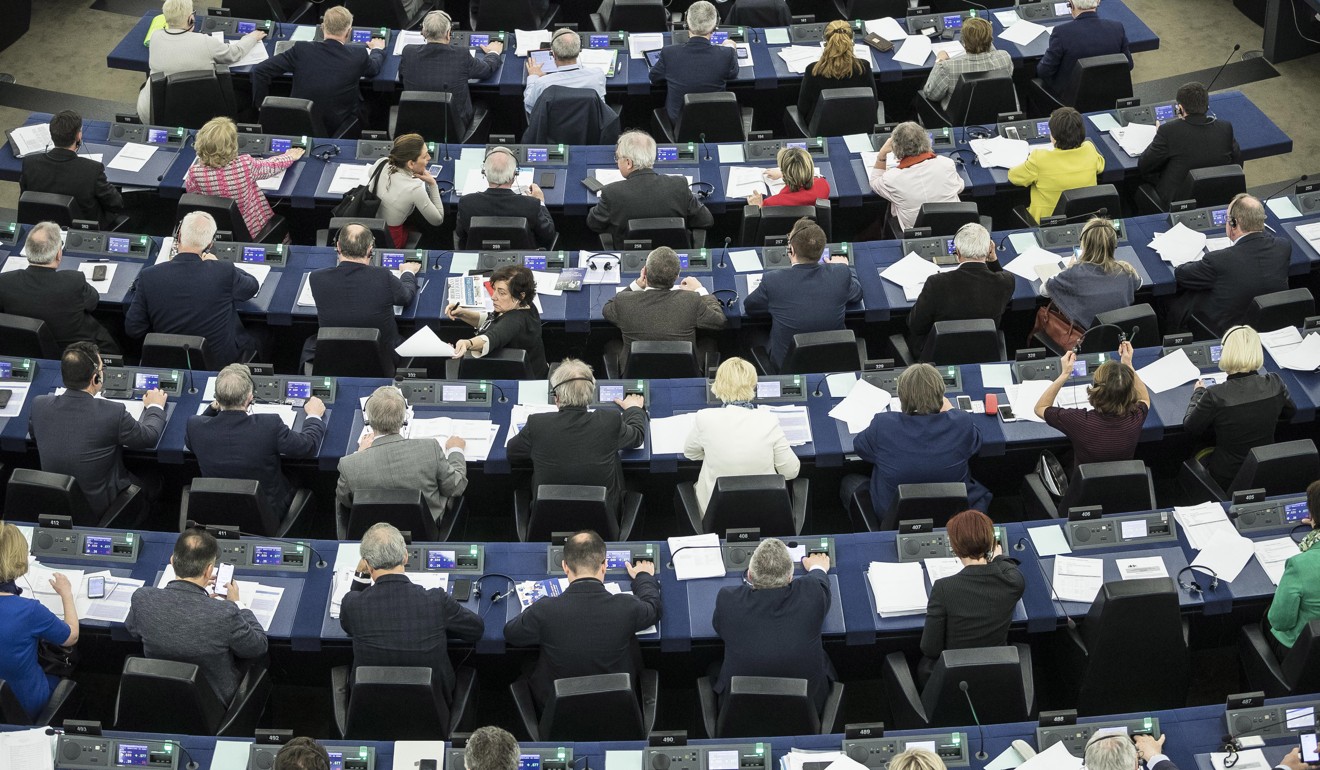
EU aims to put speed limiting technology and data recorders on all cars using European roads by 2022
- Raft of measures discussed on Wednesday include system which recognises speed limits and restricts engine power
- Move is in response to statistics showing 25,000 people are killed on European roads each year
The European Union is moving to require cars and trucks to have technology that will help keep drivers from speeding as well as data recorders that will document the circumstances of accidents.
Those were among the safety features included in a provisional agreement announced on Wednesday by the EU’s executive commission.
The package would mandate so-called intelligent speed assistance, which recognises speed limits using mapping systems and help drivers observe them by restricting engine power. The driver can override the system by pushing harder on the gas pedal. But the on-board data recorder could further deter speeding by registering the car’s speed.
“Every year 25,000 people lose their lives on our roads,” said Elzbieta Bienkowska, the European Commissioner responsible for internal market and industry. “We can and must act to change this.”
The European Commission, the executive arm of the 28-country EU, said the features would be required on all vehicles on European roads from 2022.

The other safety features would include systems to warn drivers if they seem drowsy and against distractions such as smartphone use. Cameras and sensors would be required to avoid accidents while backing up and to help keep a car in a lane. For cars and vans, the deal requires advanced emergency braking, which can detect obstacles and push the brake pedal if the driver does not responds in time.
Another system would help bus and truck drivers avoid hitting cyclists in their so-called blind spots. Although properly adjusted mirrors should allow truck drivers to see to the side, Germany’s transport ministry has pushed for the measure to reduce deaths of cyclists and pedestrians.
Much of the technology already exists and is available on more expensive cars.
The European Automobile Manufacturers’ Association welcomed the EU’s agreement but said vehicle technology needed to be supplemented with better road infrastructure and measures to encourage safer driver behaviour.
“This challenging piece of legislation will no doubt be instrumental in further improving road safety – something all auto makers are fully committed to,” said ACEA Secretary General Erik Jonnaert. “At the same time vehicle technology alone will not be sufficient. For maximum effect, policymakers must now push for a fully integrated approach to road safety; combining vehicle technology with better road infrastructure and safer driver behaviour.”
The association warned in December that intelligent speed assistance should be introduced only gradually. It said the technology was hampered by too many false readings because of out-of-date maps and poor sign visibility.
The measures announced on Wednesday were agreed on in negotiations between European national governments, the commission and the European parliament. The provision political agreement is subject to formal approval by the European parliament and EU leaders.

